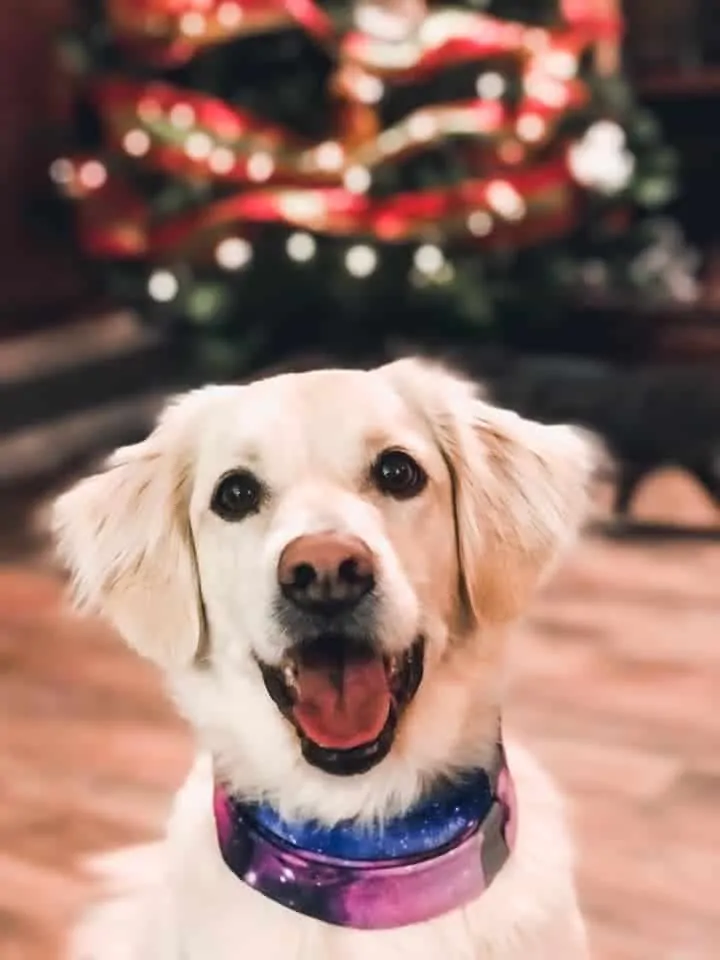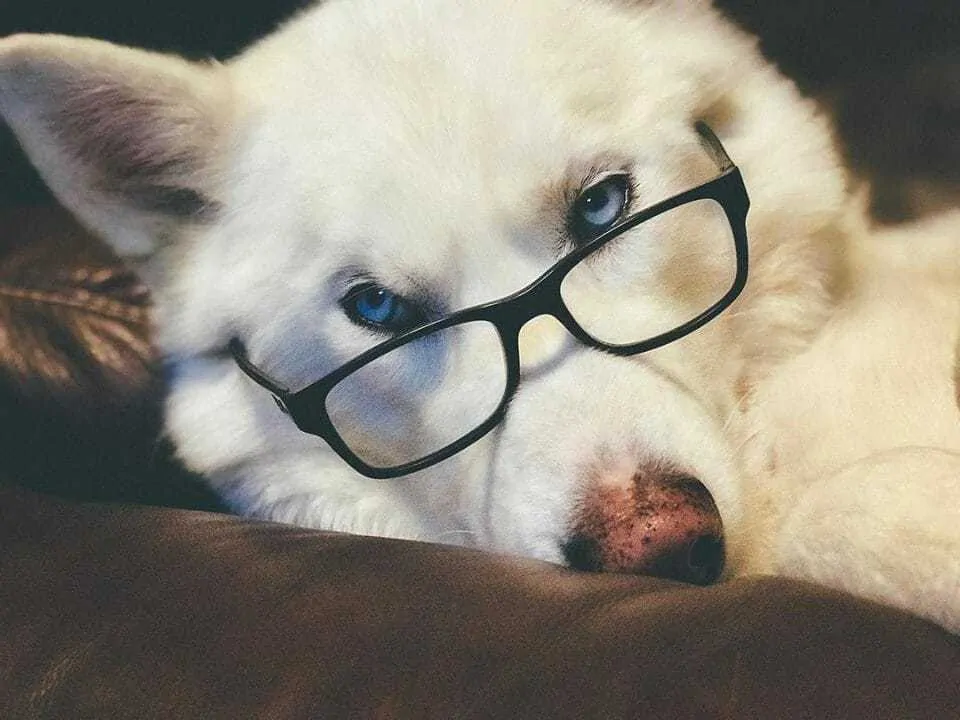We have all had that moment as dog parents — witnessing our fluffy children do something so painfully adorable that the world needs to see, and then failing to capture the moment. It’s as if our four legged companions have a “camera sense” and immediately abort mission. If capturing every moment of your dog’s cute behavior and then gushing about it to friends is on your to-do list, then this is the article for you! My four dog children keep me and my camera busy and with a few tips and tricks, you’ll be filling up your social media page with expert photos in no time!
Contents
Candid Shots and Recreations
If my Miniature Australian Shepherd is anything like your dog, he’s full of natural spunkiness and fun. Bailey, like any other dog, has a constant smile when he’s up and ready to play. Waiting for the perfect shot may seem like the logical thing to do, but taking candid snapshots of your dog can be just as rewarding! This requires more photo taking on your part, but you’re sure to find a winner in the mix – especially when you find that one picture that makes you smile. Sometimes it’s not about a wistful stare or that perfectly captured pose, but the photos with your dog’s natural smile and personality that make the kind of photo that you’ll be whipping out of your wallet asking, “Have you seen my dog? He’s three years old now!”
This candid photo captured Bailey’s personality in a single picture! He’s spunky and funky! He’s also full of happy energy and never leaves you without making you laugh first. Though this wasn’t a planned picture, letting Bailey play and run around in his natural state gave me just the shot I wanted.
Though you can use any camera for candid photos, it can be a good idea to use a camera that takes great action shots. I personally use my IphoneXr for most of my photos, but a DSLR camera or a camera with quick shooting speed and auto focus will help you capture sudden moments and let you click away to your heart’s content! You can check out this guide for recommended DSLR cameras, other great beginner cameras, and where to purchase them for the best price.
Finding the Right Lighting
Lighting can be your best friend or mortal enemy when you are trying to take your pet photography skills to the next level. Having a DSLR camera or other type of camera capable of taking great quality photos with low lighting is certainly helpful, especially if you’re considering taking this photography hobby to something a little more rigorous. However, you can take excellent professional looking photos without investing in a expert camera.
First, you’ll want adequate lightning: nothing too bright and nothing too cloudy or dark. If you’ll be taking photos outdoors, it’s best to avoid direct sunlight. Direct sunlight will overtake your photos, making it difficult for your camera to focus on the object you’re trying to capture. You may also find yourself with photos that leave your dog in a complete shadow, as if the heavens are opening up directly above your dog’s silhouette.
If you’re taking photos indoors, try turning on several different lights in the home until you find yourself nodding in approval. You may have to try several different lighting sources, such as an overhead ceiling fan light or recessed lights to get the perfect amount of light across the entire room. Avoid a direct stream of lighting in one specific spot or using a table lamp as your only light source. This can cause too much brightness or too many shadows in your photos. Once you find that sweet spot your photos will be practically glowing, just like the radiant dogs you’re hoping to capture!
Gracie has an incredible smile and I wanted to capture it with the Christmas tree in the background. I turned on the overhead lights over the Christmas tree and on the other side of the living room to ensure that light was evenly distributed, making Gracie perfectly illuminated.
Keep Them Distracted and Rewarded
The key to a great relationship between your dog and the camera is keeping them distracted with the right kind of reward and praising them when they pose as needed. The right type of reward will depend on your dog’s personality. Some dogs will prefer food distractions, such as their favorite treat, while others will react more positively to their favorite toy. No matter the distraction, teaching your dog to “sit, stay, and look” are going to be your favorite commands for taking a good photo. The distraction you choose will be what your dog is going to focus on, so make sure you’re able to get your camera in the right angle so that you’ve got your dog looking in the direction you need. You may be after a far off stare or a direct smile into the camera. Sometimes it can help to have a partner in crime for these distraction sessions, one to hold the focus of your dog while you’re able to snap away. Whatever method you choose, try making these moments feel natural for your dog by rewarding them when they do as you command. Eventually, your dog will come to expect these moments and react accordingly. However, it’s important to not over stimulate your dog with outside distractions. This might mean turning off a noisy television or shutting another pet in a room while you complete your five minute photography session. This is a learning process for both you and your dog, but with time and practice, you’ll be able to easily motivate your dog into a few “sits” and a happy “smile for the camera!”
This photo took a great deal of distraction to make sure all four of my dogs were looking up at me. Though two of my dogs, Gracie and Bailey, prefer toys as distractions – all four seemed eager to pose for some food!
Editing Your Photos
If you want to take your photos to the next level, taking the extra time to edit your photos is an important last step before unveiling your hard work to the world. One recommended editing app that also comes with a ton of useful tools is Adobe Lightroom. If you’re interested in using Adobe Lightroom, there are several youtube tutorials that can guide you through the process. Adobe Lightroom comes with several free tools that are available on both the app and the computer that will do most of your key editing functions, such as blurring, focusing, and adding a color theme. Editing your photos is another great way to let your artistry shine and pick up on some of the features that you love most about your dog. My Siberian Husky, Ghost, has beautiful bright blue eyes. When I take the time to edit my photos of Ghost, I always try and add different brightening and shadowing effects to ensure that his eyes pop. Iphones, especially the newer editions, come with sophisticated editing options built right into your phone for free! You’ll be amazed at what a little blurring here and a little focusing there will do for a photo. Often times, the editing is far easier than it appears, and you’ll be looking like a pro in no time!
Ghost doesn’t require a great deal of work since he’s as model status as they come, but for this picture, I softened the hard lines, did a little bit of blurring, and edited the contrasting colors to make sure Ghost looked like a blue eyed GQ Model.
Some Final Thoughts
All of these suggestions for taking an incredible photo of your dog require practice. Don’t let a few blurry pictures get you frustrated to the point that you stop capturing memories. Memories are what make our dog photos special, so whether you’re posting a million pictures of your dog in a tutu and bow, or simply keeping them for yourself, keep practicing and spending time with your best friend in front of the camera. It’ll all come together in a flash!




